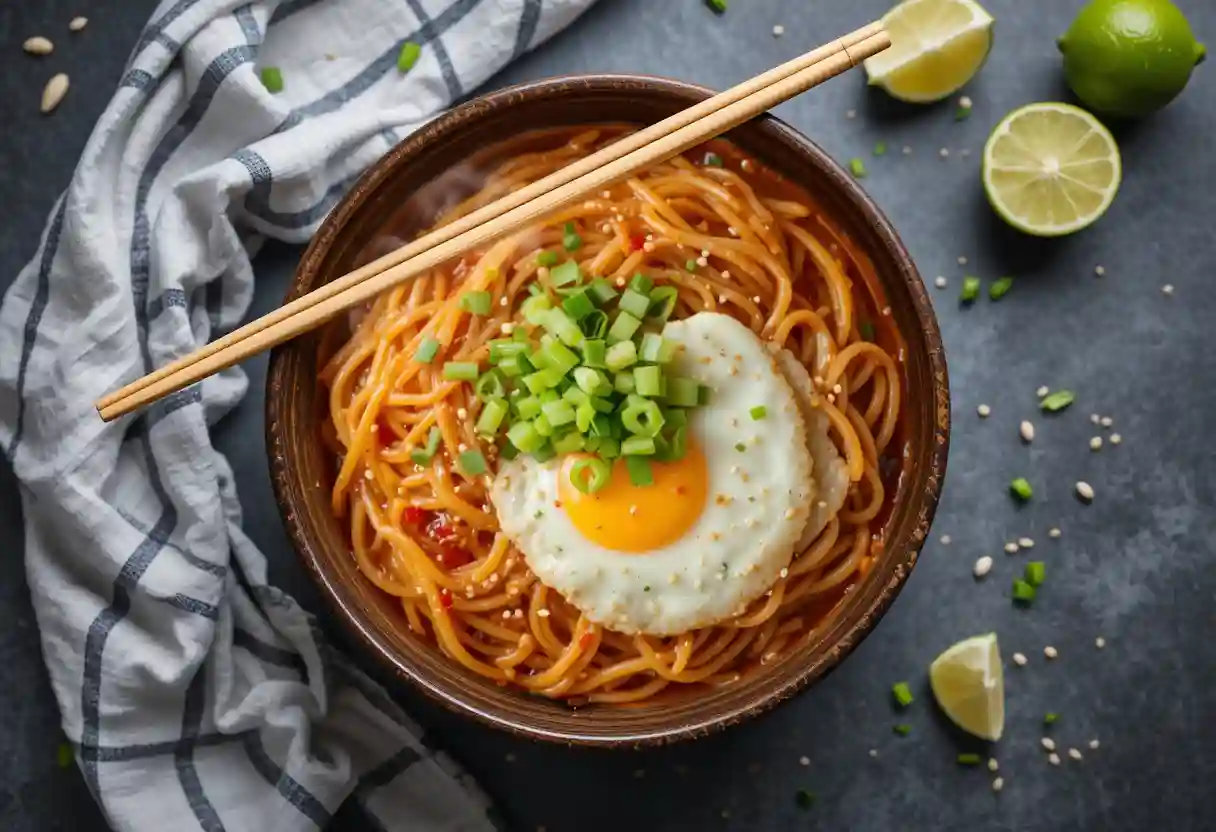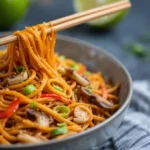There’s something magical about a bowl of noodles that instantly feels like home. For me, that moment happened the first time I tried gochujang noodles. I was standing in my cozy kitchen on a chilly evening, searching for a quick dinner that didn’t taste rushed.
I had a jar of gochujang sitting in the fridge, waiting to be used for more than just marinades. Mixing it with garlic, sesame oil, and soy sauce, I tossed it with freshly boiled noodles and the result was unforgettable. The spicy kick, balanced by a subtle sweetness, wrapped around every strand like comfort in a bowl.
My family and I sat at the table one evening and a relaxed experiment turned into a hit. Like my favorite chicken stir fry I prepare on busy evenings, gochujang noodles became a regular that is easy but honestly rewarding.
What I adore about gochujang noodles is that they’ve got big personalities. The fermented chili paste has depth of flavors that are umami and hot and a bit smoky. While regular noodles are just that, regular, this has attitude the flavors wake up the buds and you’re hungry for another forkful.
It is also very versatile. You may keep it a simple veggie option or you might throw in protein in the form of chicken or shrimp or beef just like with the versatility I adore in recipes like my garlic butter shrimp pasta. Each time I prepare these noodles,
I’m reminded that comfort food is not necessarily about heaviness or complexity. At other times, it only takes a jar of gochujang and a kettle of noodles for you to come up with a dish that at the same time energizes and comforts you.
And that’s why, once you experience it, you will find that gochujang noodles ought to be included in the rotation of weeknight dinners.
Looking for inspiration? Try The Ultimate Green Bean Casserole Recipe Guide a great starting point to master classic casserole techniques.
Read more about Gochujang.
Table of Contents
Gochujang Noodles is a Spicy, Flavor
Spicy, savory, and comforting, these gochujang noodles come together in under 30 minutes for the perfect weeknight meal.
- Prep Time: 10 minutes
- Cook Time: 15 minutes
- Total Time: 25 minutes
- Yield: 2 servings 1x
- Category: Dinner
- Method: Stir-Fry
- Cuisine: Korean
- Diet: Vegetarian
Ingredients
- 8 oz noodles (udon, ramen, or rice)
- 2 tbsp gochujang
- 1 tbsp soy sauce
- 1 tbsp sesame oil
- 2 cloves garlic, minced
- 1 tsp sugar or honey
- 1 tsp rice vinegar
- 1/2 cup sliced vegetables (carrots, peppers, bok choy)
- 1/2 cup protein (tofu, chicken, or shrimp)
- 1 egg (optional)
- Sesame seeds & green onions for garnish`
Instructions
- Cook noodles according to package and set aside.
- Whisk gochujang, soy sauce, sesame oil, garlic, sugar, and rice vinegar into sauce.
- Heat sesame oil in a pan, stir-fry vegetables and protein until cooked.
- Add noodles and sauce, toss until coated.
- Top with fried egg, sesame seeds, and green onions.
Notes
- Adjust spice by reducing gochujang.
- Use tofu for a vegan version.
- Store leftovers in fridge up to 3 days.
Nutrition
- Serving Size: 1 bowl
- Calories: 420
- Sugar: 8g
- Sodium: 860mg
- Fat: 14g
- Saturated Fat: 2g
- Unsaturated Fat: 11g
- Trans Fat: 0g
- Carbohydrates: 58g
- Fiber: 4g
- Protein: 16g
- Cholesterol: 55mg
Ingredients & Preparation Tips for Noodles with Gochujang
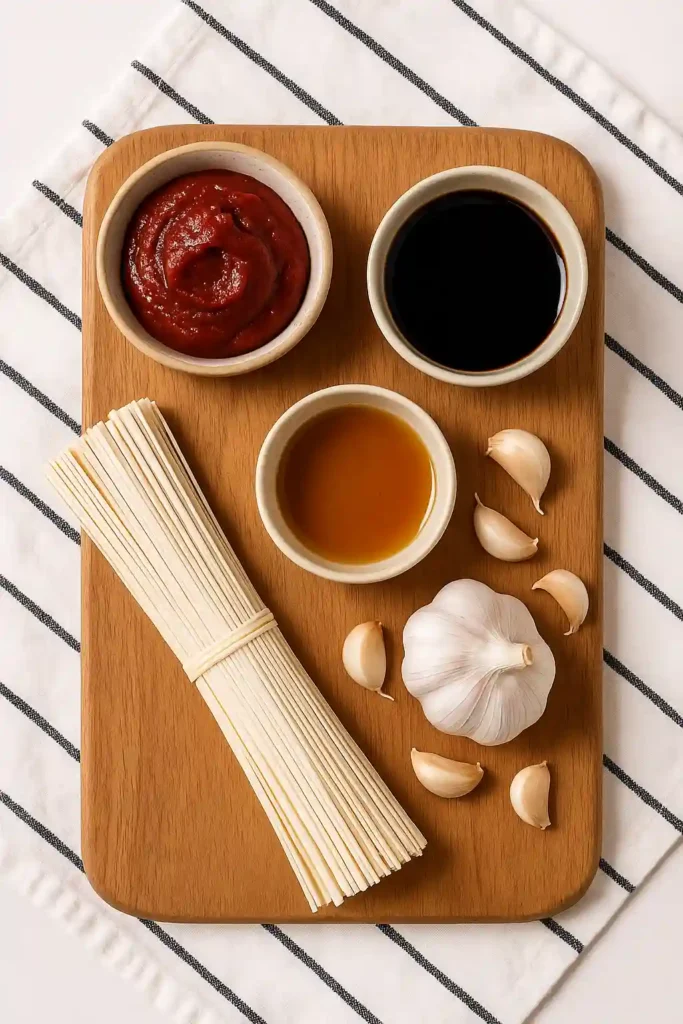
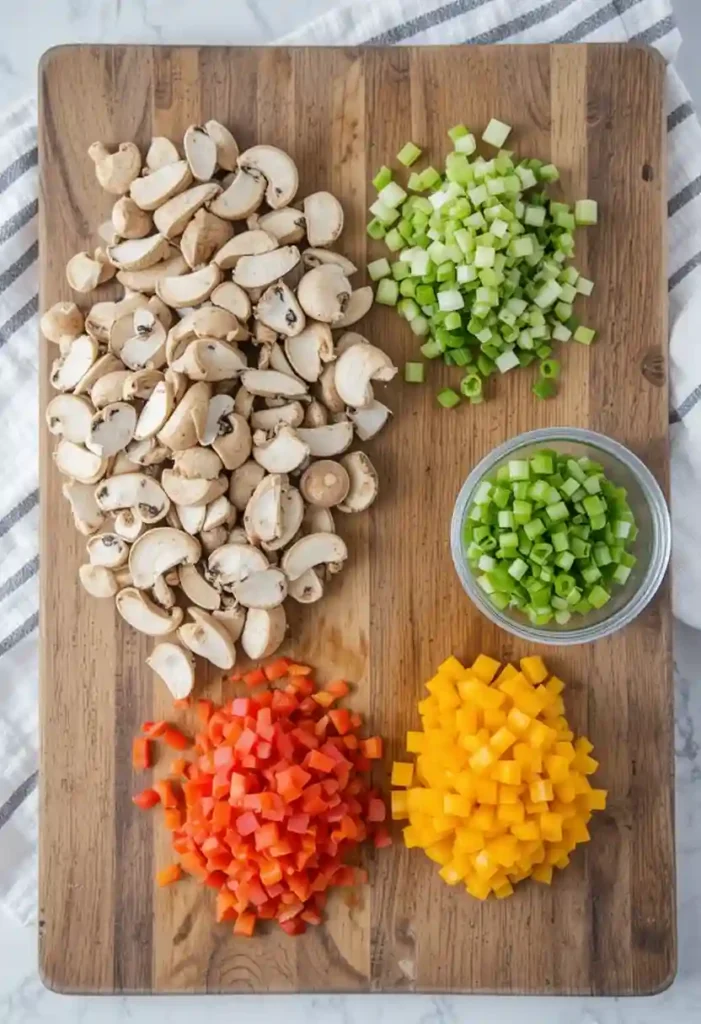
The elegance of gochujang noodles is in simplicity. It takes only a few main ingredients to produce a restaurant-quality dish in under 30 minutes. Central to everything is gochujang the Korean chili paste that brings the defining warmth and depth of flavor. Spicy, savory, a bit sweet, and the heart of the recipe.
With noodles, you’ve got a choice. Your udon noodles will get you a chewy comfort-driven bite, and the ramen a classic slurp-worthy feel. Your choice is the rice noodle if you’re going in a lighter or gluten-free direction. Me? I adore the fresh wheat noodles because the sauce drizzles into them so well, just like I do in my beef and broccoli stir fry.
Together with the noodles, pantry staples like soy sauce, garlic, sesame oil, and a drizzle of rice vinegar yield balance. A pop of brightness comes from fresh green onions and sesame seeds, and a fried egg top makes it a hearty main dish.
If you want more protein, chicken, shrimp, or tofu are excellent additions. Having the freedom to do so reminds me of the flexibility in my teriyaki chicken bowl where you’re free to get a combination of whatever you’re in the mood for.
Below is a quick summary of the basics:
- Gochujang: Spicy, umami and subtly sweet flavor foundation.
- Soy Sauce: Provides saltiness and umami to complete the flavors.
- Sesame Oil: Gives the sauce a nutty smell and richness.
- Garlic & Green Onions: Add zest and balance, and temper the robust flavors.
Prepping everything before you actually cook makes the entire process smooth-sailing. Prep the veggies, estimate the sauces, and keep the noodles in a preparatory state.
Once the pan is hot, the entire dish is ready in a snap, so preparation in advance is the best way towards achieving that perfect bowl of gochujang noodles.
Discover great ideas like Meghan Markle’s Pasta Tips to bring celebrity-level style to your casserole bases.
Cooking Gochujang Noodles Step-by-Step
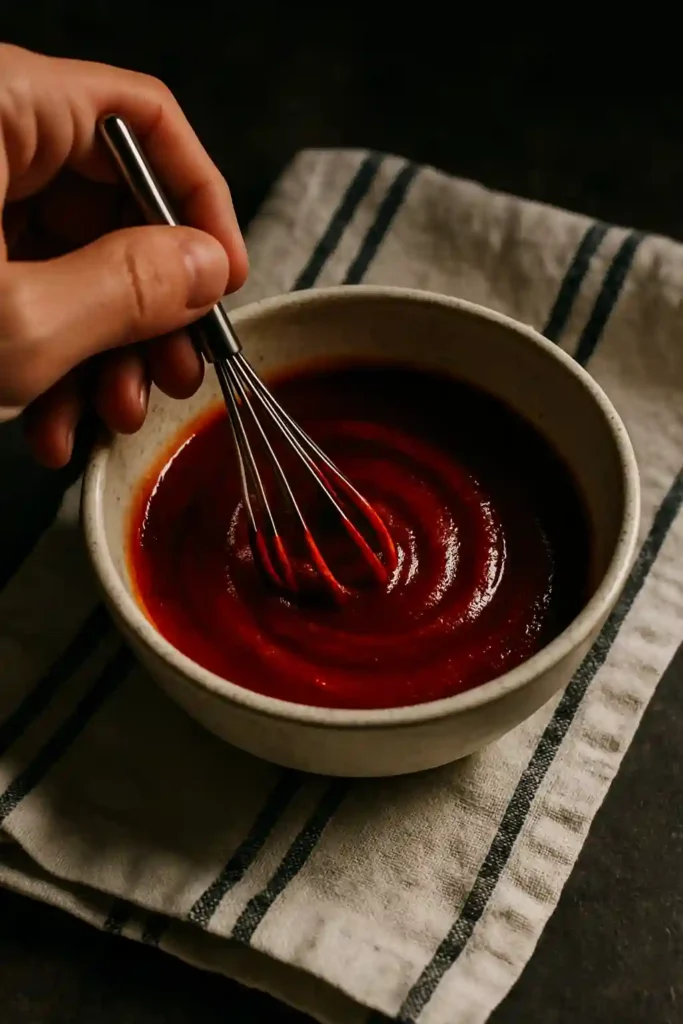
Cooking gochujang noodles is a matter of compiling flavors and cooking deliberately. Once you’ve prepared the ingredients, cooking itself is fast and rewarding.
The first step is building the sauce. In a small bowl, whisk together gochujang, soy sauce, sesame oil, a little sugar or honey, and minced garlic. This mixture creates the heart of the dish: spicy, savory, and slightly sweet with a touch of smokiness.
If you like a deeper flavor, add a splash of rice vinegar or even a spoonful of miso. I often use this same method of combining pantry staples when making my honey garlic chicken, and the result is always a bold, balanced sauce.
Once you’ve prepared your sauce, it is time to proceed with the stir-fry. Add a skillet or wok to medium-high heat and drizzle with sesame oil and add in your vegetables bell peppers, bok choy, or carrots all are great options.
Stir-fry for a minute or until they get tender but remain crunchy. Add in the protein of your choice chicken, shrimp, or tofu and until it is ready.
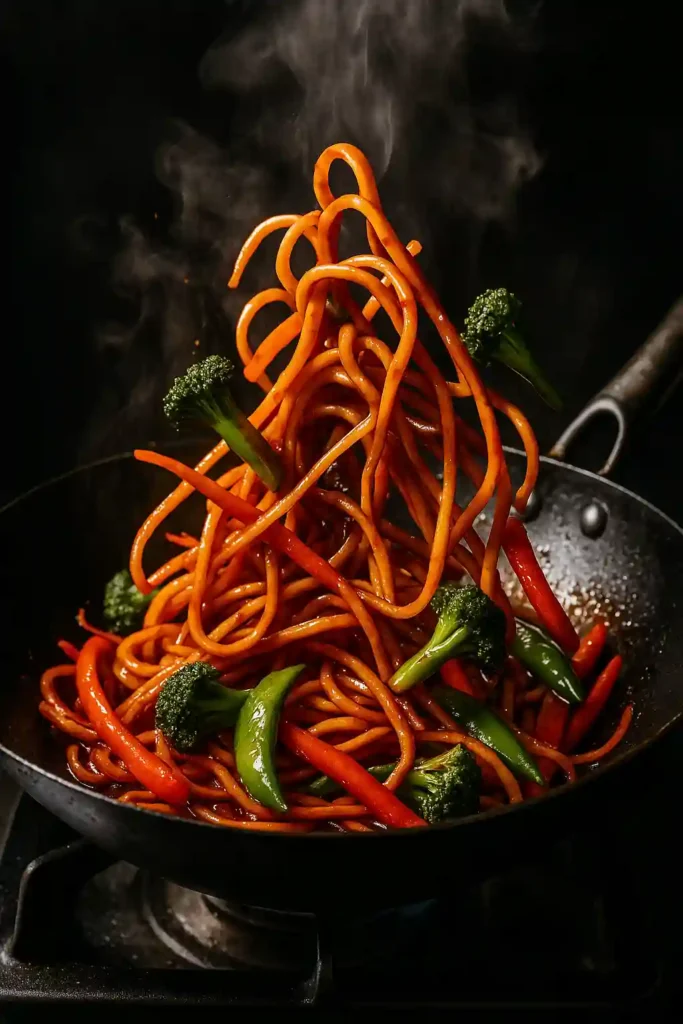
And the best part? Throwing it all together. Add the cooked noodles directly into the pan and pour the gochujang sauce on top of them. Toss briefly and make sure that each strand is coated in that shiny, tasty substance.
It’s a phase that is similar to finishing a plate of garlic butter noodles where the alchemy occurs in the finishing toss. If you prefer a more robust finish, break in a scrambled egg and beat it straight into the noodles, or top with a fried egg before you serve up the bowl of gochujang noodles.
A sprig of sesame seeds and cut green onions finishes the bowl up well. Ready in a very short time, you will be able to enjoy a bowl of steaming hot gochujang noodles.
Don’t miss our Gluten-Free Cheese and Marmite Scones Recipe perfect for pairing with savory casseroles or rounding out a dinner spread.
Serving & Variations of Gochujang Noodles
A bowl of gochujang noodles is great on its own, but the presentation does make it that much more special. When I’m short on time to get a weeknight dinner on the table fast, I enjoy serving it right from the pan topped with a fried egg and sesame seeds sprinkled on top.
The runny yolk adds creaminess that drizzles into the sauce and the type of comfort that I find more typically linked with my comfort chicken fried rice.
If you’re looking to impress guests, try plating the noodles in deep bowls and adding colorful garnishes. Kimchi on the side brings tangy crunch, while fresh cucumber slices balance the heat with a cool, crisp bite.
I also love pairing it with simple side dishes like miso soup or even a fresh salad, which keeps the meal light but still bold in flavor.
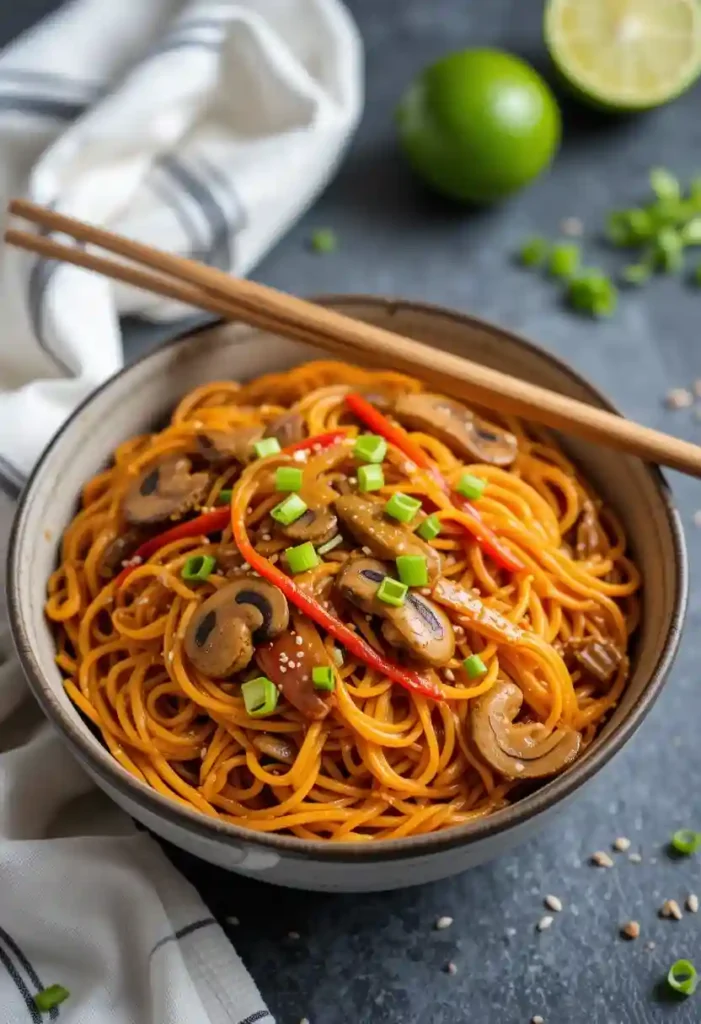
One of the pleasures of making gochujang noodles is that they’re adaptable. To make a vegan version, substitute the egg and select tofu or mushrooms for protein. Seafood aficionados can introduce shrimp or squid and experience a hot Korean-spiced stir fry.
Thinly sliced beef or chicken is perfect for meat connoisseurs and absorbs the sauce just as well as it does in a Korean beef bulgogi bowl.
If you’d like to do something different, you can actually put a fusion spin on the dish. You can try using spaghetti in place of Asian noodles and giving it a cross-cultural take, or you can make the noodles cold and create a cool-weather salad with additional sesame oil and fresh herbs.
These small changes allow you to reap the flavors of the gochujang in exciting new ways. However you prepare them, gochujang noodles are always hot, hearty, and umami in each and every bite. It’s the type of dish that suit whatever type of mood you’re in, whether you require a fast weeknight solo plate or a colorful center of the family table at dinner.
Don’t miss our Green Bean Casserole Recipe Guide to get inspired by traditional American beef casseroles before putting a twist on them.
Frequently Asked Questions about Gochujang Noodles
What type of noodles work best for gochujang noodles?
Udon noodles are a favorite for their chewy bite, but ramen, rice noodles, or even spaghetti work well. Choose based on your texture preference and what you have on hand.
Can I make gochujang noodles less spicy?
Yes. Start with a smaller amount of gochujang and add more gradually. You can also balance the spice with extra honey, sugar, or a splash of coconut milk for a creamier sauce.
How can I make this dish gluten-free?
Use gluten-free rice noodles and tamari or a gluten-free soy sauce.
How do I store leftovers?
Keep leftover gochujang noodles in an airtight container in the fridge for up to three days. Reheat in a skillet with a splash of water or broth to loosen the sauce.
Are gochujang noodles vegan-friendly?
Absolutely. Simply skip the egg and use tofu, mushrooms, or plant-based protein. Check your gochujang label too, as some brands may contain animal products.
Is it necessary to rinse the noodles?
Yes, rinsing the noodles in cold water stops the cooking process and prevents them from sticking together.
Conclusion
Gochujang noodles are the kind of recipes that demonstrate weeknight meals can be fast and thrilling at the same time. With a limited set of ingredients, you get a dish that is hot, rich, and hearty but versatile enough to suit your preferences.
You may top them with a fried egg, get them loaded with veggies, or come up with a creative variation but they always yield strong flavors in each and every bite. When you feel hungry and desire something quick but memorable, let a bottle of gochujang be your ace in the hole.

